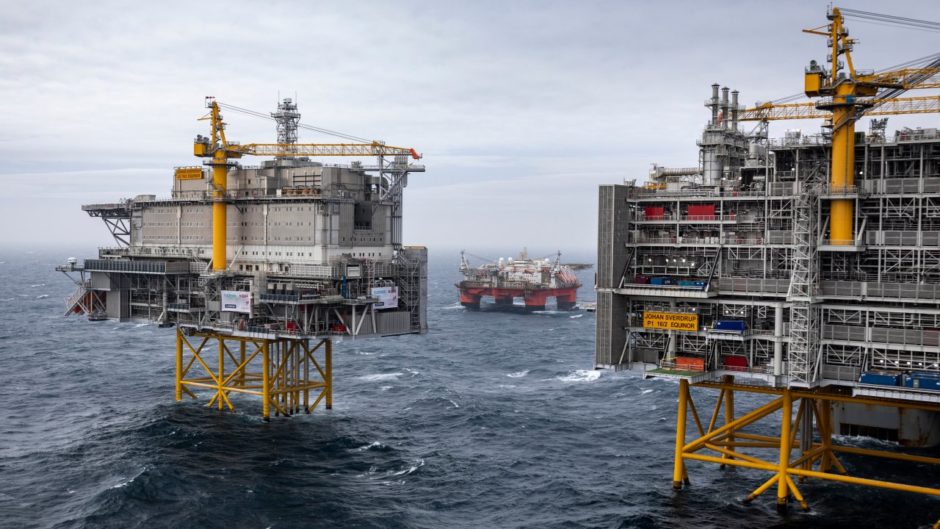
The giant Johan Sverdrup oil field is coming to the rescue of Norway’s oil industry — again.
The improbable mega-project in the North Sea, years after the oil province’s heyday, already provided a lifeline to engineers and platform builders starved for work during a historic slump in the crude market. That was evident during a visit to the project this week as some of the more than 500 workers on the facility zip by on the scooters used to cut travel time between the four connected platforms.
Now that it’s started producing, Equinor ASA’s flagship project is showing what it can do. The field is redressing production figures for the Nordic country and the state-controlled company in a year that’s been worse than expected, and will help them both increase output in the years ahead. It also temporarily masks the decline of older fields and a dwindling pipeline of Norwegian projects.
While the field is unlikely to compensate fully for unplanned outages earlier this year, it ramped up output quicker than planned to as much as 350,000 barrels a day recently, Arne Sigve Nylund, Equinor’s executive vice president for development and production in Norway said on Tuesday. Loading programs suggest production will be close to 400,000 barrels by January, not far from its first-phase maximum rate of 440,000 barrels a day expected by the summer.
“The project is running well,” Nylund said aboard the massive facility on a windy day in the North Sea. The screen-filled control room is connected by fiber optics to subsea sensors almost 2 kilometers below and workers carry digital tablets to access the data they need from anywhere on the 700-meter long installation.
Sverdrup has allowed Equinor to maintain a target for stable production in 2019 despite a 3% drop in the first nine months of the year, driven mostly by its Norwegian fields. It’s also given a huge boost to smaller owners Lundin Petroleum AB and Aker BP ASA.
In the coming years, Sverdrup will drive output growth both for Equinor and Norway as a whole. National oil and gas production is expected to reach a peak in 2023, near the 2004 record, and Sverdrup will account for a third of Norway’s crude output at that time.
The dismal performance of Norway’s oil production before Sverdrup has mainly been due to unplanned outages, which have compounded significant planned maintenance programs. The biggest impact came from Equinor’s Snorre field, according to the Norwegian Petroleum Directorate. One of the platforms on the field was shut from early March to the middle of August after a riser broke off and fell to the sea.
That and other outages have raised concerns that too much maintenance was delayed during the crisis years from 2015 to 2017, when a collapse in oil prices led to huge efficiency gains but also pushed operators to keep installations running to maintain cash flow. Equinor’s Nylund rejected the notion that unplanned events in 2019 were due to a lack of maintenance. The Snorre incident was due to corrosion caused by a design fault that the company had actually monitored, he said.
Yet oil companies slashed the number of man hours related to operations and maintenance on production facilities by 30% in 2015 and then a further 12% by 2017, according to figures from the Petroleum Safety Authority. The level in 2018 was close to 2015, and it’s an open question in the industry whether that is sustainable, said analyst Simon Sjothun of Rystad Energy AS. “The jury is still out,” he said.
While a PSA spokesman said there’s no general concern about a maintenance backlog, some equity analysts have raised the issue of performance from Equinor’s more mature fields. “We still see weaker performance from legacy fields,” DNB ASA’s Jon Masdal said in a note on Nov. 22.
The issue will become even more dire after Sverdrup’s production has peaked. Equinor has pledged to drill as many as 3,000 wells in the next two decades, but it has few big projects lined up after 2022, and certainly none the size of Sverdrup.
